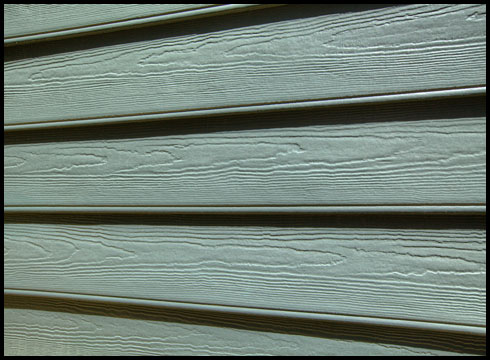Are you ready to transform the appearance of your home’s exterior but finding it challenging to choose between James Hardie siding? Undoubtedly, both synthetic materials can potentially elevate your house’s aesthetics. However, selecting the perfect siding for your home is no small feat—it demands careful consideration. Each option comes with its set of advantages and disadvantages. Ultimately, the ideal choice will depend on aligning your budget, specific needs, and desires for your beloved home. In this guide, we’ll explore the distinctive features of James Hardie siding Vs. vinyl siding, assisting you in making a well-informed decision that perfectly complements your home’s unique charm.
A Comprehensive Look at James Hardie’s Siding
James Hardie siding, also known as fiber cement siding, is popular among homeowners for its durability and classic appearance. It is composed of a blend of cement, sand, and cellulose fibers, James Hardie siding boasts exceptional strength, unwavering resistance to pests, and an impressive lifespan.
With proper maintenance, your James Hardie siding will effortlessly surpass its 30-year warranty and can even endure up to 50 years when given the care it deserves.
Here are some key features and considerations for James Hardie siding:
- Impressive Durability and Longevity:
James Hardie siding is engineered to withstand various weather conditions, including heavy rain, strong winds, and hail. It resists rot, insects, and fire, making it a long-lasting investment for your home.
- Aesthetics:
With an appearance that closely resembles wood, James Hardie siding offers a timeless and elegant look for your home. It comes in various styles, including lap siding, shingles, and vertical siding, allowing you to achieve the desired architectural design.
- Maintenance:
While James Hardie siding requires less maintenance than natural wood siding, it still needs occasional painting or resealing to maintain its original charm and protection against the elements.
- High upfront Cost:
James Hardie siding generally comes at a higher initial cost than vinyl siding. However, its durability and long lifespan can offset this expense over time.
A comprehensive look at Vinyl Siding
Vinyl siding has become increasingly favoured by homeowners for its cost-effectiveness, adaptability, and straightforward installation process. Crafted from PVC (polyvinyl chloride) resin, vinyl siding boasts many colours and styles, providing abundant design options without straining your budget.
Moreover, vinyl siding maintains its quality for approximately 20 to 40 years with regular cleaning and minimal repairs.
Here are the main features and considerations for vinyl siding:
- Affordability:
Vinyl siding is one of the most budget-friendly options available for homeowners. It offers a cost-effective way to improve the appearance of your home without breaking the bank.
- Low Maintenance:
Vinyl siding is virtually maintenance-free. Unlike wood or James Hardie siding, it does not require painting or staining. Periodic cleaning with a hose is typically sufficient to keep it looking fresh.
- Variety:
Vinyl siding comes in various colours, styles, and textures, allowing you to find a look that matches your home’s character and style preferences.
- Durability:
While vinyl siding is relatively durable, it may be more susceptible to cracking or fading over time, especially in extreme weather conditions. High-quality vinyl and professional installation can help mitigate these issues.
Choosing The Best Option For Your Home
When choosing between James Hardie siding and vinyl siding for your home, several factors come into play. Here are some key factors to consider:
Durability
Both James Hardie siding and vinyl siding are durable options. James Hardie siding, also known as fiber cement siding, is resistant to rot, insects, and fire. It can withstand harsh weather conditions and has a long lifespan. Vinyl siding is also durable and resistant to moisture, insects, and rot.
However, while both are durable, James Hardie siding is generally considered to be more impact-resistant.
Maintenance
Vinyl siding requires less maintenance than James Hardie siding. Vinyl doesn’t need painting or staining and can be cleaned with a hose or pressure washer.
On the other hand, James Hardie siding may require repainting every 10-15 years to maintain its appearance and protect against moisture.
Aesthetics
James Hardie siding has a more authentic wood-like appearance and can be an excellent choice for homeowners who want the look of wood siding without its maintenance requirements.
Vinyl siding comes in various colours and textures, offering versatility in design, but it might not fully replicate the look of natural materials like wood or stone.
Cost
Vinyl siding is generally more affordable than James Hardie siding. While the upfront cost of James Hardie siding may be higher, its durability and potential to reduce maintenance costs could balance the expenses in the long run.
Climate Considerations
Both James Hardie siding and vinyl siding are designed to withstand different weather conditions, but James Hardie siding might be preferred in areas with extreme temperature fluctuations or frequent severe weather events due to its superior impact resistance.
Conclusion
Ultimately, James Hardie siding and vinyl siding have unique strengths and weaknesses. By considering your budget, aesthetic preferences, climate, and maintenance expectations, you can make an informed decision that will enhance the beauty and durability of your home’s exterior. Whether you choose the timeless elegance of James Hardie siding or the affordability and easy maintenance of vinyl siding, your home’s curb appeal will surely benefit from either option.
If you’re looking to install either one of these materials in your home, contact us at Phoenix Siding for the installation of james hardie siding and vinyl siding. Our experienced team can help assess your home’s condition and provide professional recommendations on what material best suits your project.



